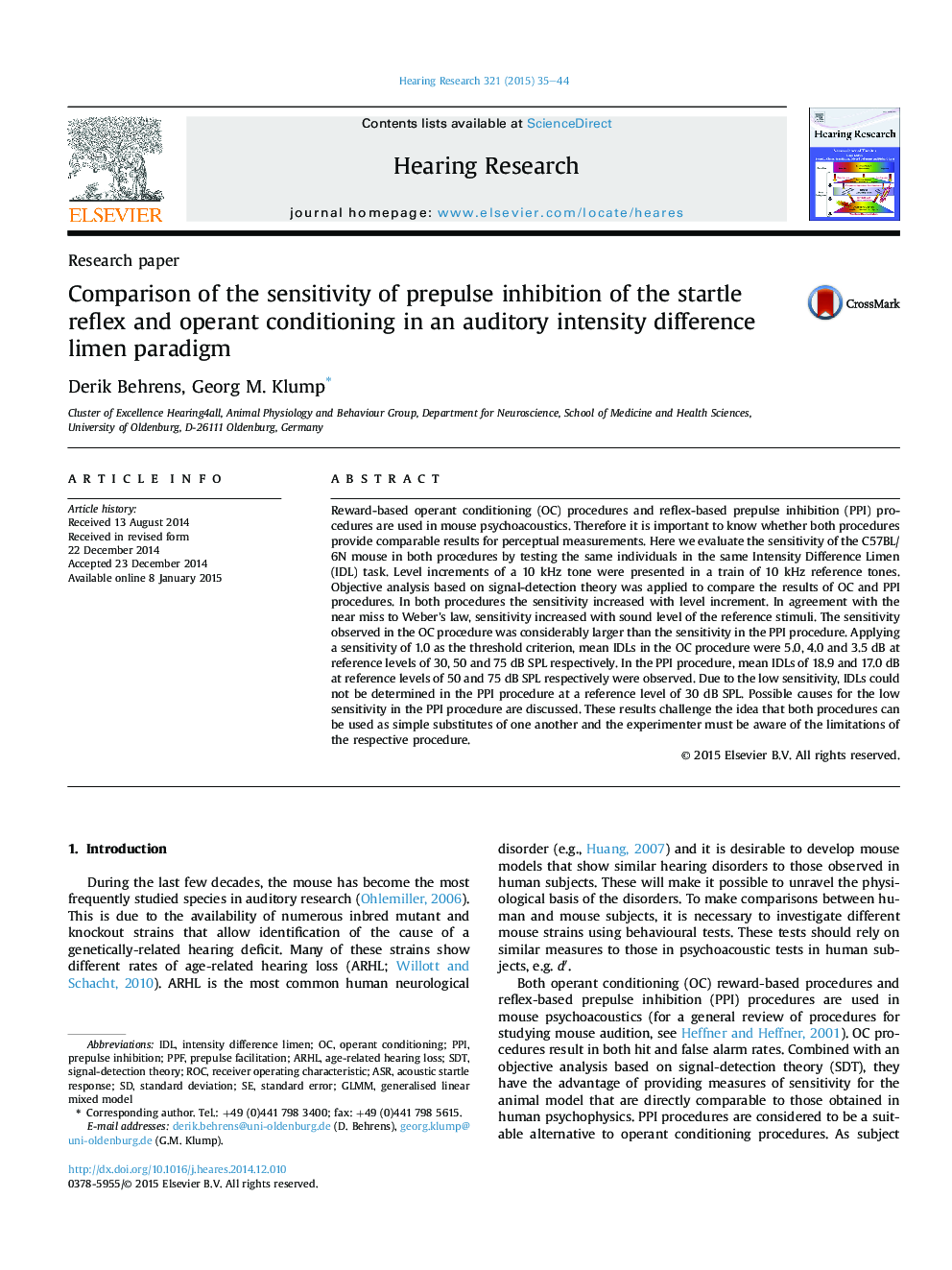| کد مقاله | کد نشریه | سال انتشار | مقاله انگلیسی | نسخه تمام متن |
|---|---|---|---|---|
| 4355098 | 1615579 | 2015 | 10 صفحه PDF | دانلود رایگان |
عنوان انگلیسی مقاله ISI
Comparison of the sensitivity of prepulse inhibition of the startle reflex and operant conditioning in an auditory intensity difference limen paradigm
ترجمه فارسی عنوان
مقایسه حساسیت مهار پیش انعقاد رفلکس تحریک شده و تهیه عامل در یک پارادایم اختلاف شدت شنوایی
دانلود مقاله + سفارش ترجمه
دانلود مقاله ISI انگلیسی
رایگان برای ایرانیان
کلمات کلیدی
PPFIDLGLMMARHLSDTPPIROCASRAge-related hearing loss - افت شنوایی مرتبط با سنstandard deviation - انحراف معیارsignal-detection theory - تئوری تشخیص سیگنالstandard error - خطای استانداردOperant conditioning - شرطیشدن فعال، شرطیشدن نوع IIGeneralised Linear Mixed Model - مدل ترکیبی خطی عمومیPrepulse inhibition - مهار پیش قاعدگیacoustic startle response - واکنش هیجان آکوستیکprepulse facilitation - پیشگیری از پیشگیریreceiver operating characteristic - گیرنده عامل عامل
موضوعات مرتبط
علوم زیستی و بیوفناوری
علم عصب شناسی
سیستم های حسی
چکیده انگلیسی
Reward-based operant conditioning (OC) procedures and reflex-based prepulse inhibition (PPI) procedures are used in mouse psychoacoustics. Therefore it is important to know whether both procedures provide comparable results for perceptual measurements. Here we evaluate the sensitivity of the C57BL/6N mouse in both procedures by testing the same individuals in the same Intensity Difference Limen (IDL) task. Level increments of a 10Â kHz tone were presented in a train of 10Â kHz reference tones. Objective analysis based on signal-detection theory was applied to compare the results of OC and PPI procedures. In both procedures the sensitivity increased with level increment. In agreement with the near miss to Weber's law, sensitivity increased with sound level of the reference stimuli. The sensitivity observed in the OC procedure was considerably larger than the sensitivity in the PPI procedure. Applying a sensitivity of 1.0 as the threshold criterion, mean IDLs in the OC procedure were 5.0, 4.0 and 3.5Â dB at reference levels of 30, 50 and 75Â dB SPL respectively. In the PPI procedure, mean IDLs of 18.9 and 17.0Â dB at reference levels of 50 and 75Â dB SPL respectively were observed. Due to the low sensitivity, IDLs could not be determined in the PPI procedure at a reference level of 30Â dB SPL. Possible causes for the low sensitivity in the PPI procedure are discussed. These results challenge the idea that both procedures can be used as simple substitutes of one another and the experimenter must be aware of the limitations of the respective procedure.
ناشر
Database: Elsevier - ScienceDirect (ساینس دایرکت)
Journal: Hearing Research - Volume 321, March 2015, Pages 35-44
Journal: Hearing Research - Volume 321, March 2015, Pages 35-44
نویسندگان
Derik Behrens, Georg M. Klump,
